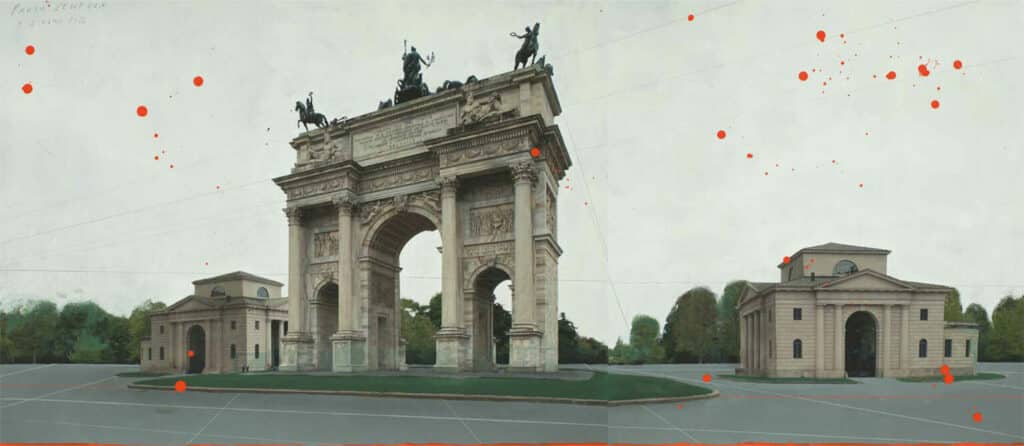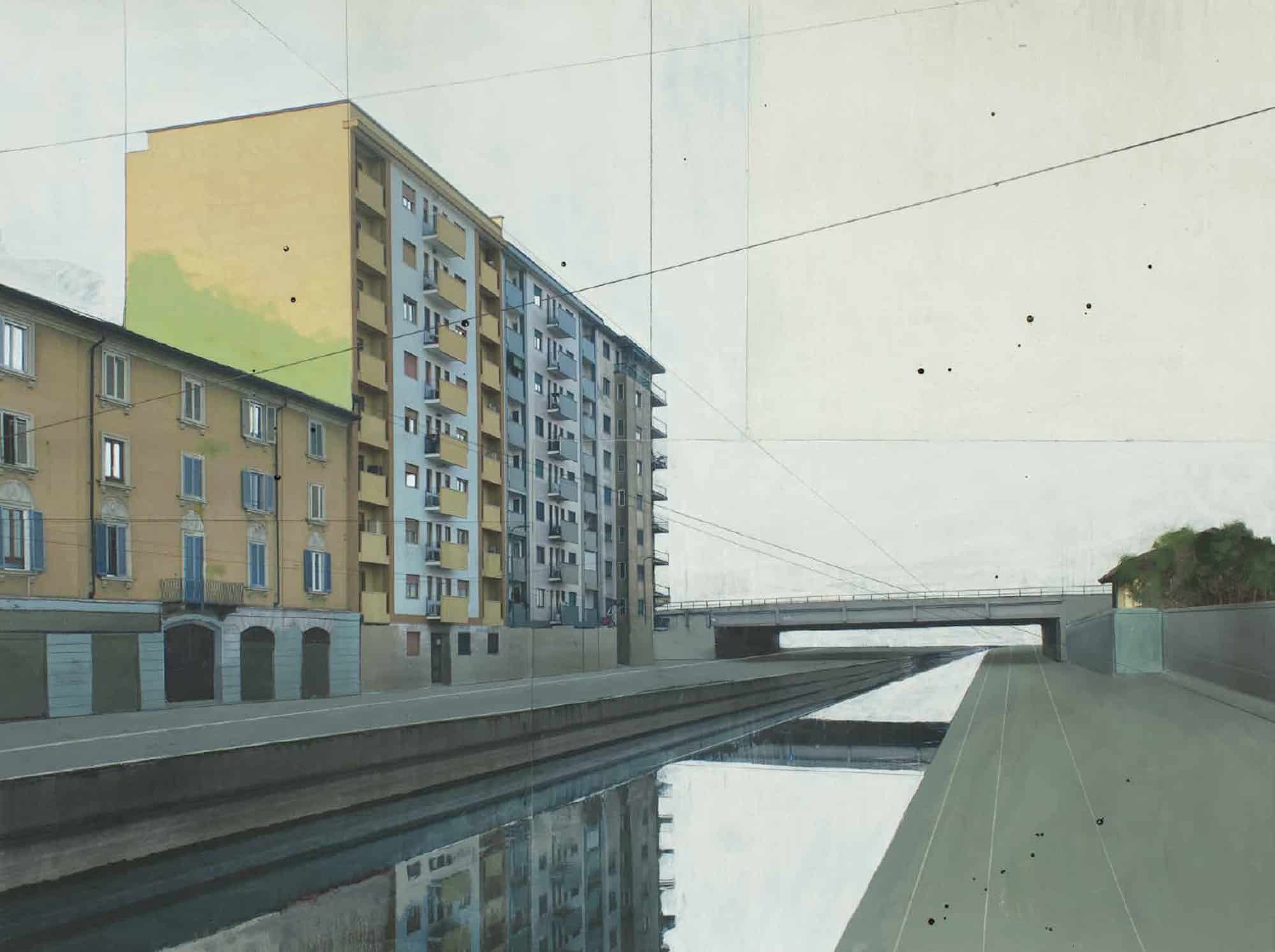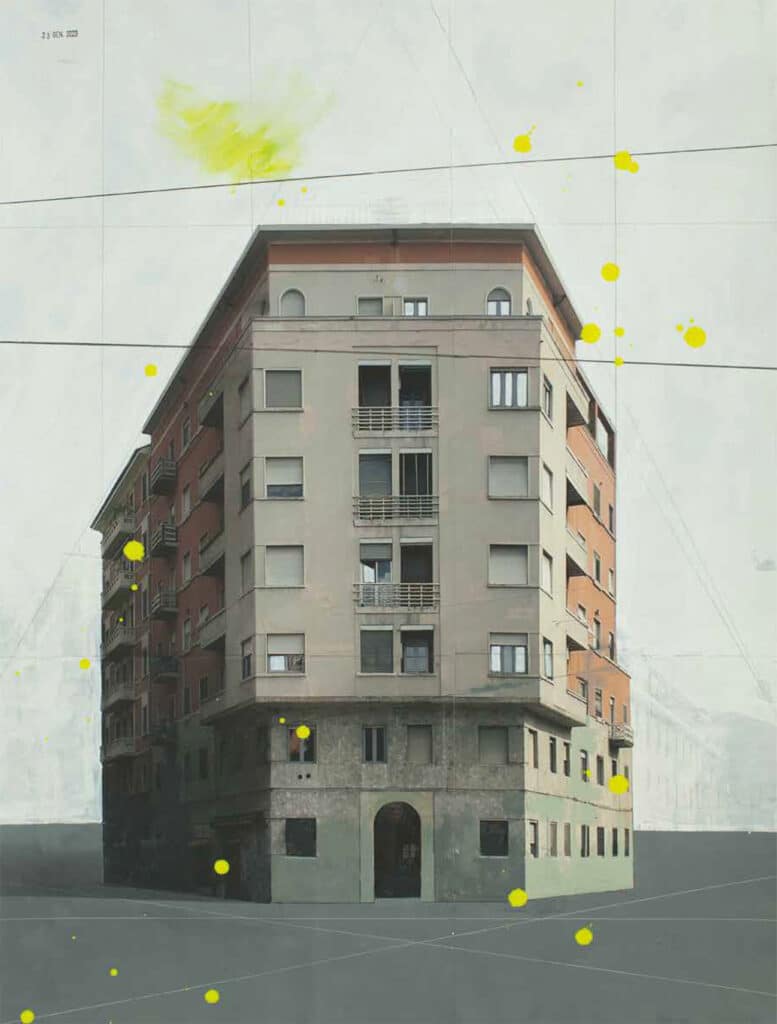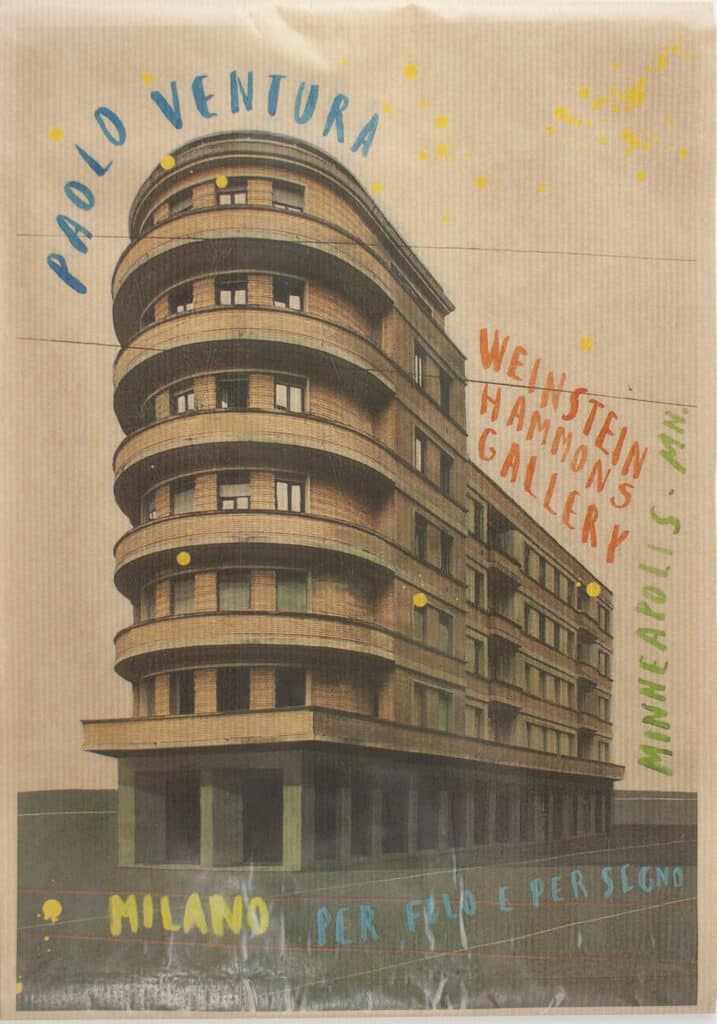“Barilla pasta is a perfect building,” Paolo Ventura laughs.
The acclaimed photographer and artist recalls a childhood spent making cities on grocery store conveyor belts as the boxes moved toward the cashier. Sugar boxes and Barilla pasta boxes were best. Flour was not so good. These are the little obsessions, the little solitudes as he quotes philosopher Roland Barthes, that colored the photographer’s life as a young child in his native Milan. Such cityscapes have constantly reappeared throughout Ventura’s work as an adult. His new work on view at Minneapolis’s Weinstein Hammons gallery, Milano Per Filo e Per Segno, follows suit.

Made during Milan’s strict pandemic curfews, Milano Per Filo e Per Segno features buildings isolated from others on the city’s streets, not unlike its people were at the time. But for Ventura, it was not an act of mourning. Rather “it was really a vision to see finally my [grocery shopping] made real,” the affable photographer chuckles. “I know it was a terribly tough time for a lot of people, and for me as well for other things,” he says, but the silver lining was being able to enjoy the buildings on their own, largely removed from the legions of people moving past them on a daily basis.
It’s within a cityscape like Milan–and New York, where he also lived for many years–that Ventura always felt most protected, never isolated, always stimulated. His work was and remains in many ways an ode to them. “It’s my nest,” he says. But in his work, which has become known for its fantastical presentations, he usually prefers to control the cityscape in some way, to inject into it elements of his own invention. Ventura says Milano Per Filo e Per Segno is the first time the opposite became true, that this was “the first time I [used] a real place, and it became not real anymore,” he says. “For me, [it] was a vision to see the cities without anybody because they look like what I always dreamed about.”
When possible, Ventura took pictures of these buildings with his phone because he wanted the images to be as basic as possible, and always photographed the buildings at random. He was particularly interested in parts of the city where he could find a multitude of architectural styles in the same block. This is a feature of Milan’s history, interestingly: because so many buildings were bombed during World War II, there were many rebuilt in different time periods and thereby styles throughout the next few decades.
Upon enlarging his image of the building and printing it on several panels then sewn together, Ventura would then begin to paint over it, further isolating the buildings within their scenes. The result, he says, was at once metaphysical and surreal, almost like a stage. Cables from the city’s trolleys cross their windows and ground them in reality while Ventura’s paint splatters push them into abstraction. Isolated from their surroundings, the buildings become similar to the constructions and collages in Ventura’s other work, tableaus on which there seems to be no life, but could be.
“‘Per filo e per segno’ is an Italian expression meaning word for word,” the Weinstein Hammons gallery writes, “and its direct translation ‘by line and by thread,’ is a tongue and cheek double entendre on the photographic representation of these Milanese buildings and the perspective lines drawn throughout.” The work is both reality and fantasy, the lines true to the image, the threads not; or are they? Ventura considers himself a photographer who doesn’t believe in photography, he laughs. He likes the medium best when he feels the freedom to paint over his work.
The elements of fantasy Ventura discusses are not just running through his work, however; they’re also running through his life. Ventura was greatly influenced by his grandmother, who he describes as a wonderful storyteller, a witness to both World War I and World War II. Her stories of growing up in the country live in his work, at once fact and fiction, truth and imagination. Ventura says he feels he’s still living inside of her stories, that he still has to grow up, he laughs. Additionally, Ventura is an identical twin, which he finds to this day still asks him to question the nature of his own reality and presentation and the nature of the self.
“There’s always a sense of things, you know. You need a long journey to arrive back where you start, sometimes.”
Another influence was Ventura’s father, Piero, who was a prolific children’s book author. While their relationship was a difficult one, Ventura did learn from his father that “you can spend most of your day doing something really fun,” he says, something creative and fantastical if you so desire. “There’s always a sense of things, you know. You need a long journey to arrive back where you start, sometimes.” He finds making children’s books a pure exercise in fantasy, creativity, and imagination where sometimes he feels his other work is about a repetition of objects. Ventura has since completed three of his own children’s books, and has more in the works.
Interestingly, Ventura’s journey toward photography as a fine art actually starts with his career as a fashion photographer in the 1990s. And while it was a prolific one, with work in international brands of Elle, Vogue, and Marie Claire, it was another scene based on a fantasy, though not always one of his own divining. He wanted to tell his own stories. “I wanted all my toys for me, I didn’t want to share with anybody,” he laughs. He was in New York at the time and began making his own work. Soon it was in The New Yorker, courtesy legendary visuals editor Elisabeth Biondi. Everything took off from there: international coverage, museums, galleries, scenic design, books, and so much more. The stories remain his own.
By his own admission, Ventura lives in the worlds he creates. “I don’t really have time to look at the outside world,” he says. “That’s why I built the world around me so I can also spend most of my day there.”
Milano Per Filo e Per Segno by Paolo Ventura, is being published by Danilo Montanari Editore (Ravenna, 2023), cm 24 × 34, 32 pages, €35.






